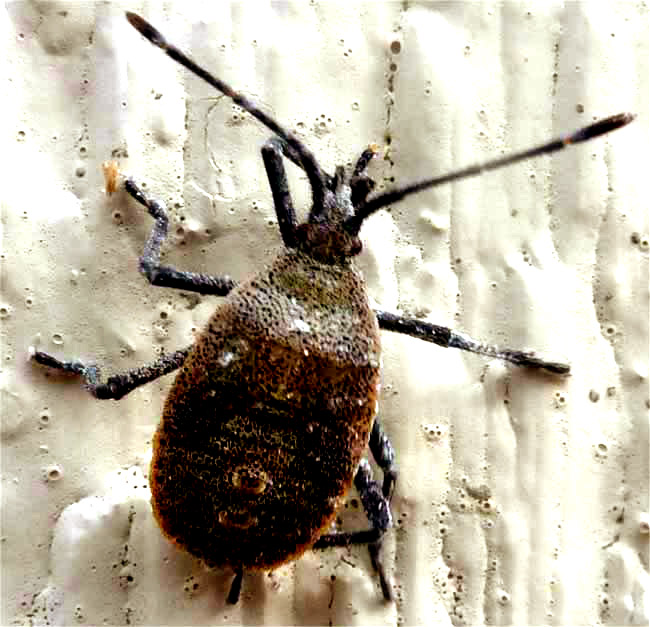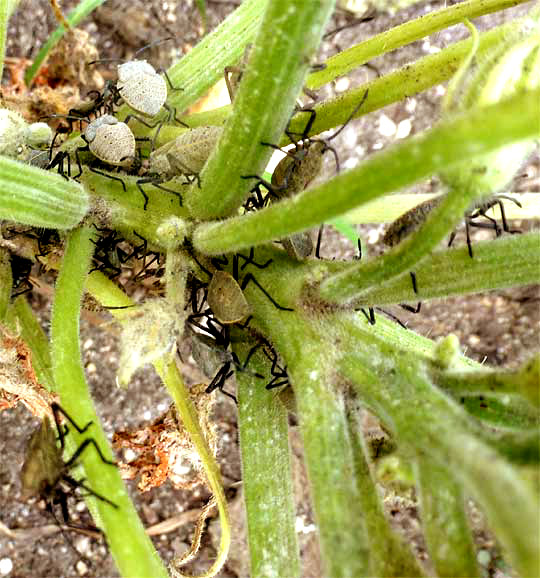Excerpts from Jim Conrad's
Naturalist Newsletter

from the July 6, 2014 Newsletter issued from the valley of the Dry Frio River in northern Uvalde County, southwestern Texas, on the southern border of the Edwards Plateau; elevation ~1750m (~5750 ft); N29.62°, W99.86°; USA
SQUASH BUGS
My neighbor Phred had some nice summer squash plants he enjoyed watering each morning and he was anticipating the nice harvest of yellow crooknecks indicated by the presence of many flowers. However, one morning as he approached his darlings with the hose, all his plants suddenly were droopy -- more than droopy, obviously moribund and never to produce a single squash. When he looked among the leaves' petiole bases he could see what had happened: His precious plants had been attacked by Squash Bugs, ANASA TRISTIS, and you can see Phred's picture of them below.

He also took a picture of one on his garage wall, shown at the top of this page.
These bugs are immature, as you can see in the top photo, where that bug's wings are no more than small scales covering only a small portion of the abdomen. On adults, the wings extend all the way to the tip of the rear end, and on the wings themselves reticulating veins are easy to see. If Phred had looked closely at his squash plants earlier, he'd have seen smaller versions of these immature Squash Bugs, which would have almost looked like large, gray aphids with black legs and antennae.
Since the immature Squash Bug displays several immature forms, it's clear that this species undergoes incomplete metamorphosis, which is the case for all "true bugs" -- all members of the True Bug Order of insects, the Hemiptera. An insect undergoing complete metamorphosis, like butterflies, passes through the stages of egg --> larva --> pupa --> adult, but those with incomplete metamorphosis follow this path: egg --> nymph --> adult.
Nymphs themselves develop through several stages, or "instars," the number of stages depending on the species. Squash Bug nymphs display five nymphal stages, with each instar a little larger than the last, and with wings a little better developed.
The second part of the Squash Bug's binomial, "tristis," caught my eye because in Spanish "triste" means "sad," because it's based on the Latin "tristis" with the same meaning. I wondered if Swedish Baron Charles De Geer who named our bug in 1773 imagined how sad people would be when they saw how the bug had killed off their squash. However, looking into the matter, it's clear that De Geer was thinking of the second meaning of the Latin "tristis," which is "smells bad." In fact, Squash Bugs when bothered do emit a foul odor.
Phred asked for advice about getting rid of his bugs. From what I can see, if you really want to kill them, the best way is to just smush them with your fingers or maybe brush them off into a can of kerosene. Bugs who suck their meals through a straw inserted into the plant, and who are encased in a plastic-like exoskeleton, are pretty impervious to most insecticides, except those so disagreeable that they'll wipe out much more than just Squash Bugs on your squash.